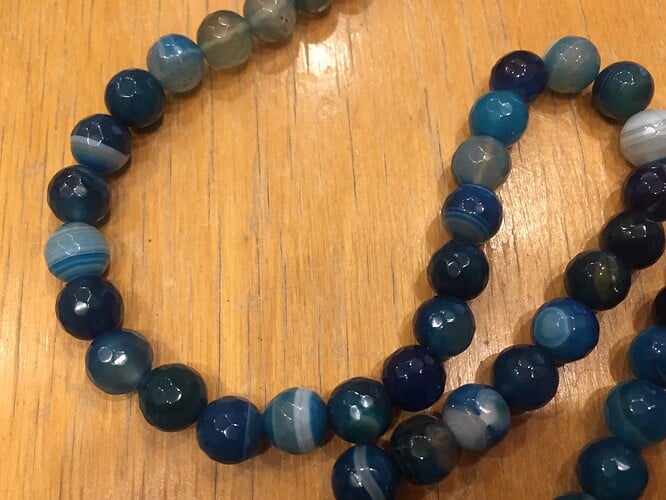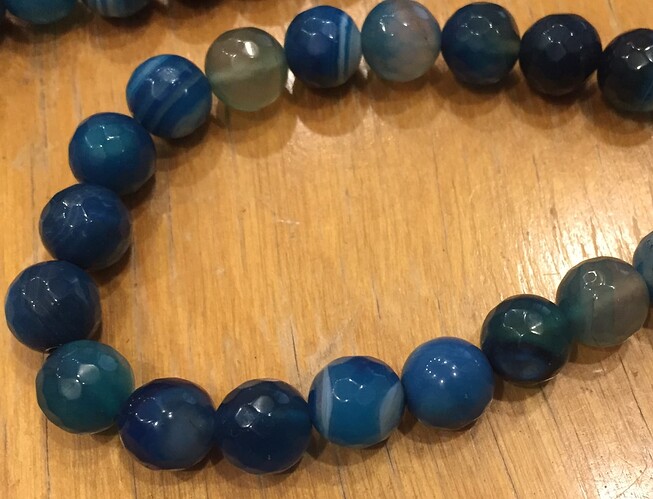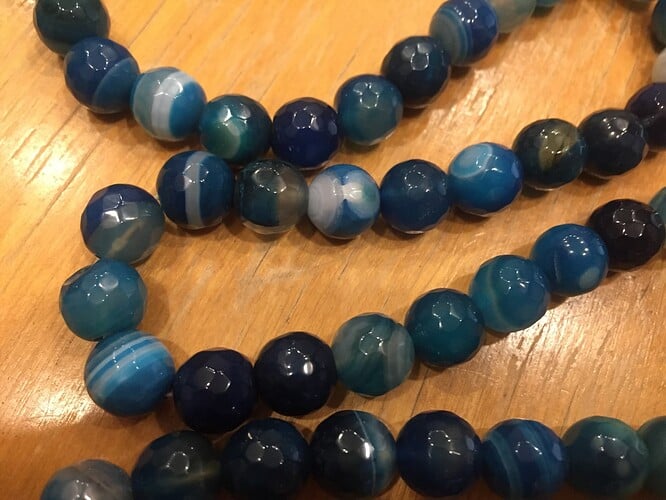I received these mala beads from India as natural and untreated, but hey look dyed to me due to a very vibrant and unnatural hue of blue. Please give me your opinions on these and, if they are ended dyed, is there any way to restore them to their natural colour?
onyx comes in all shades and hues of blue from very deep sea blue to light sky blue, and all shades in between. here are
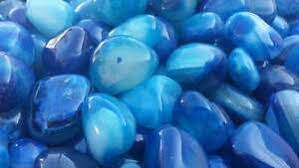
a couple examples of some tumbled blue onyx to assists you in your question.
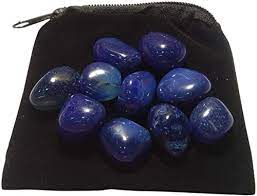
I would think they were more agate than onyx beads ???
These are dyed agate. However, agate is dyed by a process of immersion in acid with another material, so it is not like putting a dye on it like some other stones are dyed. This is a permanent chemical change.
Can anyone comment on Dumortierite, which, as I understand it, is blue quartz? In my experience, the blue is a deep color. Is it dyed to enhance the color?
Dumortierite is not blue Quartz. It is an aluminum borate silicate. Quartz is silicon dioxide. It is sometimes confused with blue Quartz and Sodalite. It is not usually dyed.
Dyeing of microcrystalline quartz is a standard procedure to enhance agate and porous quartz minerals. Sinkakas in his gem book gives several recipes. Presence of organic dyes, which is a cheaper procedure, can be disclosed by steeping stones in acetone. Otherwise, soaking stones in hydrochloric acid will either remove the color or leave it intact depending on the dilution of the acid used. Another test is to cut a bead in half. Usually the dye treatment does not penetrate to the center. Caveat emptor!
So, do they look natural to you?
